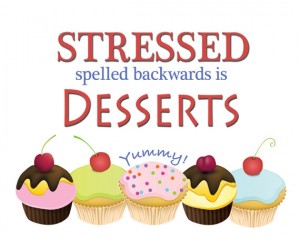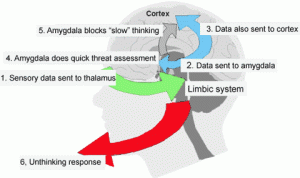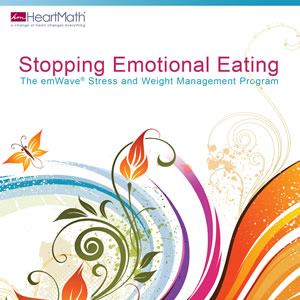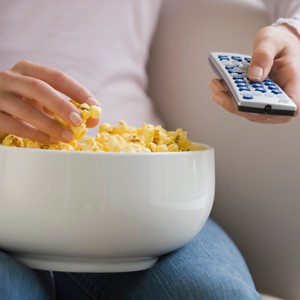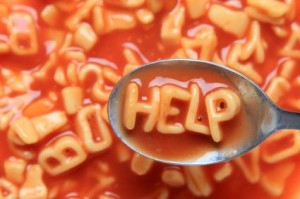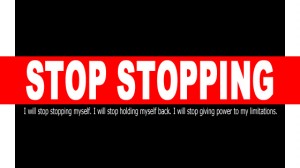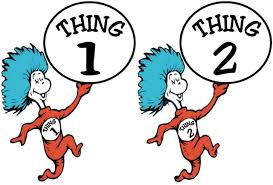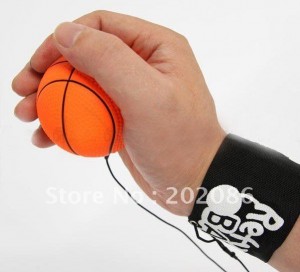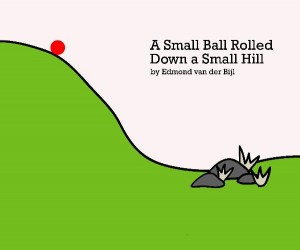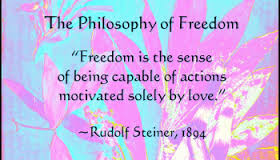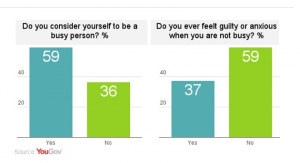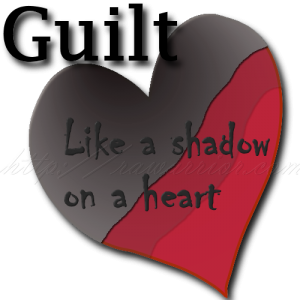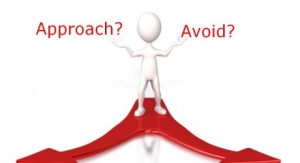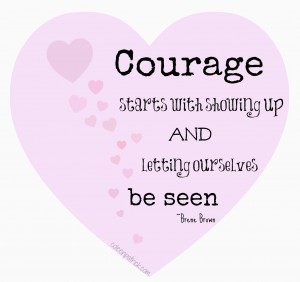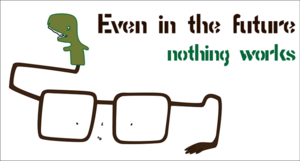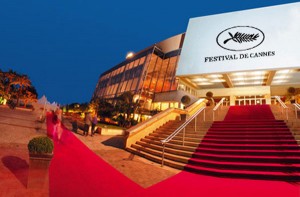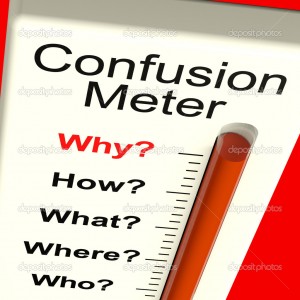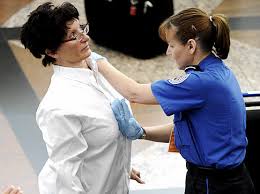adrenal stress
In the beginning of new year, many of us set new goals about weight loss. Last summer, I talk about “desserts” as “Stressed” spelled backwards. I had just been introduced to the show Cupcake Wars by my kids and was amazed by how stressful making cupcakes could be! The more stressed I became watching the show, the more I wanted cupcakes!
I’ve learned over the years that excess body fat at a basic level is not so much related to what we eat, but WHY we eat what we eat. Many of us eat more when we are stressed but why is this?
My conclusion is that stress-eating and getting fat is directly correlated to what we are not dealing with. And what is that? Our feelings!
So my acronym for F-A-T is Feelings-Avoidance-Technique!
If you ask someone how they deal with stress, they won’t say, “I avoid my feelings”. But that’s often exactly what happens. Instead of slowing down, tuning in and dealing with the underlying cause of stress, it’s easier to just “stuff it” and go on. And stuffing is easiest done with a comfort food, a mindless TV show or getting immersed in social media of some kind.
I’m exited that we can now get accurate information about food, eating and health. This week, January 25-29, 2016, the first-ever Fat Summit is being hosted by Dr. Mark Hyman. I consider him to be a pioneer in functional medicine and so I’ll be listening in to his interviews with leading experts. Click here for the Fat Summit
There is so much misinformation about how best to lose weight and even more difficult, how to keep it off. I’m happy to see my friend Nick Ortner as a guest on this event. I interviewed Nick for my telesummit a few years ago and clearly, he understands the connection between weight, stress and feelings.
In my experience, every time I gained weight, I had been experiencing stress for a long time. There’s a cascade that happens for us, especially women that goes like this: we start getting stressed by being over-busy. Then we reward ourselves with a treat (like a dessert). This makes us feel temporarily better (due to chemical responses in the body such as serotonin), but then it leaves us feeling sluggish, tired and craving more. The more we indulge in the cravings, the less active we become. The less active we become, the more weight starts to pile on!
In my case, I have had bouts of going into denial about getting fat that included not weighing myself at all and then starting to wear only yoga pants so I don’t have to notice how my regular clothes were getting uncomfortable! So yep, like a lot of you, I have tons of experience gaining and losing weight.
Below, I’ll share with you three approaches that can stop this cycle without dieting! I’ve realized it’s never really about the fat content in food, but about our ineffective methods of coping with emotions and stress!
#1 Feelings Incorporation Technique (F-I-T!) is my all-new Triple Heart Healing Technique.
I created this technique last year to help my clients easily learn how to move emotions and effectively deal with their feelings. This technique uses music in a specific healing frequency (528 Hz) and involves connecting to the body in a specific area where a lot of emotion is stored. In the 3 hour webinar, I outline a new foundation for understanding our subtle energy anatomy based on 12 chromatic chakras as opposed to the existing old system of 7. My online webinar is ground-breaking and encourages you to change your belief around your energy anatomy. In doing s0, you can easily access stored feelings and let them flow – without getting stuck and without going into past pain! The cool thing is that the more you let your feelings flow, the less you find yourself reaching for food to stuff them!
For more information on the Triple Heart Healing Technique click here
I also have two other techniques that are very helpful in managing stress and reducing cravings and binge-eating.
If you find yourself struggling with stress-related cravings or bingeing, either one of these programs can help and neither one of them involves dieting or restricting food:
Brain Tek’s Behavioral Relationship Entrainment (BRE) program is a 4 to 6 week program where individualized sound protocols are used to re-wire your neural pathways so that you can get back in control of your decisions. The key thing that happens is that under prolonged stress, your frontal cortex- your brain’s executive command center, is hijacked by your limbic system or the emotional brain. It’s nearly impossible to make consistent and good decisions when you’re experiencing this brain hijack process.
During the BRE program, you also learn a quick and effective technique to activate your frontal cortex and get back on track, anytime, anywhere.
Combined with personalized sound therapies that re-wire the brain for optimal functioning, it’s very easy to keep up your progress. Week-by-week, you will see the results of your brain’s improvement. But more importantly, you will feel the difference and even maybe see it on the scale if over-eating is an issue!
The other technique I use with my clients comes from my HeartMath training. With the 4 week Stop Emotional Eating Program, you learn 3 quick and easy self-regulation techniques that use the innate power in your heart to make better choices. It’s a different approach but just as effective if you keep up the techniques.
These HeartMath techniques are Notice and Ease, the Power of Neutral and Quick Coherence. The first two, Notice and Ease and the Power of Neutral, are helpful to stop cravings as soon as you become aware of them. Quick Coherence is the main technique we use to change the pattern of stress eating and to sustain commitments you make to having a healthier lifestyle.
Both programs are very robust and include individual coaching with me. They are tailored to your needs and your specific goals. And as I stated above, neither one of them focuses on dieting, restrictions or calorie counting!
The good news is that when you are stressed, you don’t have to find yourself reaching for more desserts or treats. You can learn to effectively deal with your feelings. And also learn to activate either the brain or the heart’s power to learn new skills for managing life’s every day stressors before they get overwhelming or out of control.
It truly is one of life’s greatest pleasures to enjoy a great dessert every once in a while! For me, the more conscious I am of making a good choice, the better the dessert tastes!
For information about the Triple Heart Technique, and the BRE or Stop Emotional Eating Programs, please email me at ronna@modernmastery.com
In the sizzling peak of our hot desert summer in Phoenix, Arizona, my kids have gotten me hooked into watching cooking shows for the first time ever: our favorites are Chopped! and Cupcake Wars. Getting engrossed in these shows, I can’t help but wonder- when did cooking become a competitive sport and so very, very stressful?
Also — when did TV watching become connected to “bingeing”? I thought bingeing was just about food and now there are all these shows about cooking under extreme stress, that you can binge-watch, while I guess, also binge eat! Or at least get some good food cravings going from all the great food being prepared!
When I realized that “desserts” is “stressed” spelled backwards, it’s no wonder that when we are stressed- we sometimes go for extra desserts!
It’s easier now than ever before to give in to cravings- and end up bingeing and feeling out of control. There have never been so many different ways we can distract ourselves and/or reward ourselves for dealing with the stress in our daily lives. I may be behind the curve with this trend because I didn’t ever know it existed, until I found myself binge-watching cooking shows. This lasted a few days until my kids and I were watching one episode that was very high stress and ended up with a cooking fire in the kitchen!
This led me to smack my forehead and say “get a grip Ronna! Turn off the TV and walk away from the cooking shows!” I had slipped into an adrenaline craving – i.e. watching TV shows that are based on high-stress and thereby getting stressed myself, and that led to binge TV watching! Thank goodness, it only took me a few days to get out of the grips of the adrenaline carving, binge indulging cycle! Because guess what? The more I sat on the couch, the more I mindlessly snacked! Oops!
Happily, I have a lot of resources to access when I find myself going in a direction that isn’t productive. I was able to use the techniques from Brain Tek’s program and also, to re-activate my heart’s coherence and make better choices about my time and energy.
If you find yourself struggling with stress-related cravings or bingeing, either one of these programs can help and neither one of them involves dieting or restricting food:
Brain Tek’s Behavioral Relationship Entrainment (BRE) program is a 4 to 6 week program where individualized sound protocols are used to re-wire your neural pathways so that you can get back in control of your decisions. The key thing that happens is that under prolonged stress, your frontal cortex- your brain’s executive command center, is hijacked by your limbic system or the emotional brain. It’s nearly impossible to make consistent and good decisions when you’re experiencing this brain hijack process.
During the BRE program, you also learn a quick and effective technique to activate your frontal cortex and get back on track, anytime, anywhere. This is exactly what I did when I had the moment of awareness that I had been binge-watching cooking shows. During the BRE program, you learn to give yourself a very simple cue. In my case, I touch my forehead (or smack it if needed!) –and that gets my decision-maker back on track!
Combined with sound therapies that re-wire the brain for optimal functioning, it’s very easy to keep up your progress. Brain Tek also has a great standard stress sound protocol that you can purchase for $9.99 and own forever! It’s called “Stress Relief” and it specifically targets the stress centers of your brain so you can calm down and relax.
http://www.sgserver.net/braintek/?idev_id=117
With the 4 week Stop Emotional Eating Program, you learn 3 quick and easy self-regulation techniques that use the innate power in your heart to make better choices. It’s a different approach but just as effective if you keep up the techniques.
These HeartMath techniques are Notice and Ease, the Power of Neutral and Quick Coherence. The first two, Notice and Ease and the Power of Neutral, are helpful to stop cravings as soon as you become aware of them. Quick Coherence is the main technique we use to change the pattern of stress eating and to sustain commitments you make to having a healthier lifestyle.
Both programs are very robust and include individual coaching with me. They are tailored to your needs and your specific goals. And as I stated above, neither one of them focuses on dieting, restrictions or calorie counting!
The good news is that when you are stressed, you don’t have to find yourself reaching for more desserts or treats. You can activate either the brain or the heart’s power to learn new skills for managing life’s every day stressors before they get overwhelming or out of control.
It truly is one of life’s greatest pleasures to enjoy a great dessert every once in a while! For me, the more conscious I am of making a good choice, the better the dessert tastes!
For information about either the BRE or Stop Emotional Eating Programs, please email me at ronna@modernmastery.com
We are not taught how to let go! No one teaches us this but everyone seems to say it from time to time: “Just let it go!” Usually our only instruction about letting go happens when we are a toddler and not sharing a toy, hanging on to it for dear life. As a consequence, the toy gets taken away and we hear about how nice children “share”. So it’s no wonder we struggle with how to actually willingly let go of something. 
In today’s article, I will share with you the 2 specific things that prevent us from permanently letting go.
At some point in life, most of us find ourselves searching for resources, tools and techniques for letting go of the past or shifting a repeating pattern. My search has led me to the best experts in the self-help industry and I have tried an “alphabet soup” of supposedly proven techniques. Here are a few that I have tried, many of which I delved very deeply into: The Sedona Method, The Release Technique, EFT –Emotional Freedom Technique or “tapping”, Psych-K, EMDR (Eye Movement Desensitization and Reprocessing), shamanic soul retrieval, and The Healing Codes. I have also heard first-hand accounts from my clients about their experiences with many of these techniques.
The good news is that most of them work, if we work consistently with the system. But the bad news is, they only work up to a point or we stop doing it.
The key to unlocking the doorway to permanent letting go (without the “Bounce-back effect”) is to discover where the stopping point is, and “let go of the stopping”.
I have discovered exactly where the stopping point is. And it is located right inside our physiology. It is NOT, in my experience, in the non-localized mind –i.e. conscious, subconscious or unconscious or in repressed emotions.
This is exactly why all the techniques listed above work only up to a point, and tend to stop working during a big stress-related event. Why?
SPECIFIC THING #1: Because we have a biological tendency to stick with the familiar, especially in times of stress. It is wired into our physiology to reset to old patterns when we encounter an intense or prolonged challenge.
SPECIFIC THING #2: Releasing techniques rely upon only certain parts of our energy anatomy and many are dependent upon a practitioner to do something for us, to us or with us.
For example, the Sedona Method focuses on cognitive and emotional processing. Psych-K focuses on spiritual and cognitive processing with a practitioner facilitating the sessions. EFT focuses on physical, emotional and cognitive processing and can be self or practitioner led. ALL of them require a lot of time, a lot of repetition and a lot of discipline.
What happens along the way when we encounter a stressful event? Discipline is often the first thing to go out the window and then the old habit, thoughts, and feelings creep back in and we find ourselves with the weight back on, or overextended on a credit card or in a similar relationship conflict.
So what to do? I will be sharing the 2 foolproof ways that resolve the issues related to SPECIFIC THING #1 and #2. (Anybody read Dr. Suess’ Cat in the Hat? We will have fun with Thing 1 and Thing 2 in the workshop!)
When you “get” the Thing 1 and Thing 2 antidotes, it will enhance your progress with any other releasing technique and ensure that you don’t stop. And I will also share the Secret Ingredient to Letting Go: it is a specific state of being, both mental and emotional. It’s a state that is easy to cultivate and fun to be in- and it’s not acceptance or gratitude. It requires no meditation, specific breathing or any other outside tool.
The details for the May 30th online and in-person event are listed at the bottom of this article.
Before I close, I want to examine the surefire ways we know we are stuck in old patterns.
These are three signs that indicate that we are NOT yet letting go: 1) Asking “Why is this happening?” , 2) trying to act or pretend that “It’s all good”, and 3) feeling incredulous about what is happening. What does incredulous mean? “Disinclined or indisposed to believe, indicating or showing shock, surprise or disbelief.”
There is actually only one mental/emotional state where the true act of letting go happens, and again, it’s not acceptance and it’s not gratitude!
I know this because the events that occurred for me personally in 2014 led me to dive deeply into the letting go process. In the beginning of 2014, I found myself embroiled in a situation that left me feeling incredulous and asking “Why?” Mid-way through the year, I found the “missing link” to letting go and since then, I have created a very effective multi-dimensional practice to keep the process moving.
So why do issues and challenges have a tendency to bounce back? The answer is very simple – so simple we often complicate the process.
In the first half of 2014, I had been doing what a lot of my clients were reflecting back to me when they would come to my office, throw themselves into the chair opposite me and say “This (relationship conflict, being alone, not getting the job they want etc.. ) HAS TO STOP!, I’m done with it! I’ve let go of “IT”. And then the next month, the same thing would happen. It is immensely frustrating when the “IT”, keeps dragging on, like my situation did with court dates, depositions, and attorney meetings – none of that could just stop.
So what’s the simple answer? It’s found in the analogy of a rubber ball. When we throw a rubber ball at a wall, it just bounces back! It comes back with a lot of force, sometimes it even hits us. That’s what most of us do when we want to let something go. We throw it away with emphasis, force and an exclamation point! This HAS to stop! Some of us are so good at it that we have a strap on our wrist attached to the rubber ball and we don’t even know it!
But, if we learn to let the ball roll softly out of our hand, it just rolls away. It doesn’t come back.
In my workshop/webinar, I will be sharing exactly how to let IT roll away. It involves a very simple process and does not entail a ton of repetition, self monitoring or rating yourself or your feelings on a scale of 1 to 10 or on any scale for that matter!
Please click here for information about the workshop/ webinar. Click here to register. I invite you to have fun with me as we learn new and effective ways to Let Go!
Drivers who don’t signal to turn or who speed up when you try to pass, cigarette butts on the ground, people who carve their initials in rocks in state parks, people who cut in line… This is a short list of my pet peeves. Instead of letting these little peeves sneak up and upset me, I decided to work with them and wow! I discovered that these pet peeves can create a BIG change in my inner landscape.
But first, why ever bother to do anything about a personal peeve?
What is a pet peeve? According to Wikipedia: A pet peeve is a minor annoyance that an individual identifies as particularly annoying to himself or herself, to a greater degree than others may find it. Also, it is defined as “a thing that provokes one the most”. (Etymonline.com) The origin of the word came about in 1919, from the 14th-century word peevish, meaning “ornery or ill-tempered”.
So really, anything that provokes us to be ornery or ill-tempered has the potential to reflect on our own inner emotional landscape.
Each time we get riled up, there is a cascade of physiological reactions: our blood pressure can go up, our heart rate accelerates, and we get a dose of cortisol, the stress hormone, racing through our entire system. And, we are usually angry, annoyed and provoked about “them” doing something to “us”. And if you’ve read my HeartMath blog articles, you know that the heart signal that emanates from within, sends BIG signals to all of those around us, that translate to “stay away from this person! they are mad!” http://sacredjourneyoftheheart.com/blog/?p=163
Take a minute to write down your top 5 pet peeves before reading on. This is a fun exercise!
Now that you have your list, ask yourself, “What does each peeve really mean about what I am doing? How does it reflect on my actions and reactions?”
For example, when I discover that there’s no more toilet paper on the roll, I am capable of yelling around the house: “Am I the ONLY one who can change a toilet paper roll in this house?!” Even if my kids are not home, I can stomp around and be angry. And depending on when you discover the absence of this crucial element in the bathroom, it can be worse than just an annoyance!
Having fun with this means translating each pet peeve to a more symbolic meaning: (and there are many with the empty toilet paper roll, but I will stick with the less visceral ones…) For example, what are the “clean-up” things in my day to day activities, am I leaving undone, or expecting someone else to do for me? Oh boy! this points right to something going on right now. My PR guru is setting up a new landing page for me and I have yet to get her the two paragraphs of content for it. Somehow, I’ve been hoping she could do this little “dirty work” for me – after all, she knows what I’m trying to do!!
Another interpretation is this: it’s time to get into the crevices and around the floor boards of my home for Spring cleaning. I’d rather have someone else do it for me, but I know it is an important task for me to do myself. Taking care of my beautiful home is an important act of gratitude. Why is it important and useful to do this little exercise?
1) it frees you from petty reactivity and unnecessary physiological stress
2) when you realize that you can actually change your physiological reaction to little stressors, it is much easier to apply the principles to bigger events.
3) You stop reacting like a victim to other people’s “bad actions” and you CHOOSE to shift your behavior and emotions to a more responsible place.
4) You have more fun interacting in the world from a place of levity and light-heartedness instead of anger, judgment and blame.
Before I go through a few more examples, I want to clarify that doing this exercise does not mean that we are condoning littering, bad driving, and selfish behavior. We all have the responsibility to take action when necessary and to be considerate and caring of others. But when I look at my pet peeves from this new perspective, I am able to clearly see the reflection of places I can personally do a better job in living day to day life.
To finish up, here are some potential meanings of the other peeves I’ve listed and questions to ask yourself:
Getting mad a drivers who do no use their turn signals: In what way I am neglecting to indicate my own direction in life- with my work and relationships. Am I giving clear intentions about where I am going? Or am I being clandestine, secretive or at times, just plain clueless?
Being upset by people who speed up when I am trying to pass them on the highway: Am I supporting the people around me and honoring the pace that works best for them? Or am I judging and internally criticizing people who are trying to move forward from a place of stagnation? Is it possible that I am being pushy?
Getting annoyed with people who carve their names in rock in state parks (or anywhere else!): Am I trying hard to leave an “impression” with others? Where am I focused on me, me, me – to the exclusion of others needs and desires? Am I secretly harboring a fear that my life doesn’t matter unless I do something of permanent lasting “value”?
Being upset by people who throw cigarette butts on the ground: Where am I leaving emotional debris? Am I being responsible for my interactions with others, or am I throwing ‘buts..’ around (i.e. getting defensive) when someone points something out to me about how I could do something better.
Getting upset when someone cuts in line: Am I trying to short cut or get ahead others? Am I being considerate and patient? I am cutting someone off while they are talking to me, or allowing myself to be distracted on the phone instead of paying attention?
When you uncover the true meaning of your pet peeves, you are then able to make a commitment to yourself to be more aware, more kind, more caring and basically, more heart-centered.
I’d love to hear your pet peeves and the inner meanings you discover!
Happy Discovery!
Ronna
PS – guess what just happened? (Sorry if I’m getting too personal here but this is too good not to share!) I just discovered an empty toilet paper roll in the bathroom. I had a wonderful, heart-centered laugh!! AND I’m off to write my 2 paragraphs.
Have you ever gotten to the end of the day and thrown yourself on the couch and wondered “What did I do today? How did the day go by so fast?” This is a hallmark statement of an over-busy life. I’ve had a few of those recently. And it was as if the universe had honed in on this issue for me when I received a slew of emails from people that started, “I know how super-busy you are but…. “
This gave me a pause. One that I was over-due in taking! Because I had gotten into a whirlwind of activity, some of it creative, some of it habit-driven multi-tasking and some of it related to an old avoidance pattern.
When I started looking into the issue, I came across this interesting chart:
This poll from yougov.com shows that 59% of people being polled consider themselves to be busy and over 1/3 of the people polled felt guilty or anxious if they were not busy! Uh-oh! When I got honest with myself, I had to admit that I can easily slip into the feeling of “not-enough” if I really slow down! So underneath a lot of busy-ness, can be feelings of unworthiness or the desire for perfectionism. That’s what I’m referring to when I mention an old avoidance pattern.
If we have some vestiges of unworthiness or perfectionism, they will tend to crop their heads up from time to time when we start slipping into busy-ness.
Obviously, keeping busy then becomes a defense pattern to avoid these feelings and being not-busy results in guilt and anxiety! And it’s true, guilt feels like a shadow on the heart- this is not a clear heart at all!
So rather than diving in to change my busy-pattern right away, I took my own advice from my last blog (“When not to change your life…. Now), and just observed myself for a few days. But the more I observed myself in my over-busy-ness, the more I slowed down naturally, remembering to breath more consciously, to pay attention to what I was doing, and to enjoy the little things in life.
I also realized my upbringing with a strong mid-western work ethic had caught up with me again. Don’t get me wrong, having a good work ethic is important but some of us got a big dose of guilt with the message. My grandparents were farmers and spent long days working in the fields. When we wanted to laze about on the weekends, we always got a lecture about some aspect of the value of work, sometimes peppered with words like “good-for-nothing” and “low-down lazy dogs” to describe people who didn’t work hard enough.
Guilt and Fear mixed all together: Snakes in the field:
The summer that I was 13 years old, my parents decided we needed to spend some time working on our grandparent’s farm in Wyoming in order to learn the value of work. So my 15 year old sister and I would get dropped off in the beet fields at 6 am to hoe weeds all morning. This was in the days before cell phones. The only problem was that the beet fields were filled with rattlesnakes because it was such a dry season that year. We finally got out of our weeding job after I nearly sat on a baby rattlesnake next to the irrigation ditch!
We spent the rest of the summer painting outbuildings. It seemed that whatever we did, someone else was always working longer and harder than us, so my sister and I would find ways to goof off while no one was looking! A few times we got caught up and received a dose of “lazy kid” guilt. I’m sure a lot of you have had similar experiences.
The key thing today, is this pattern of guilt for being not-busy will drive periodic times of over busy-ness. The first step then, is bringing it up to consciousness again~
Banish Guilt- Create from a Clear Heart!
This is the way “Creating from a Clear Heart” program works. The first step is being conscious and the rest of the steps flow from here.
The steps of the Clear Heart process are:
C- Conscious – Choosing to bring consciousness to a situation or emotion
L- Light Heartedness – Learning to cultivate and activate a sense of light-heartedness
E- Empowerment – Emancipating old patterns and habits by taking empowered action
A – Appreciation – Acknowledging your appreciation for what is occurring
R- Responsible – Restoring appropriate balance between heart/brain resulting in responsible thoughts, feelings and actions
In the recorded broadcast of the Clear Heart Program, I discussed the 90/10 and 10/90 equation relationship between the heart and the brain. An optimal energy equation is 90% heart/ 10% brain. As I described in the webinar, this equation correlates to our physiology where 90% of the signals through our vagus nerve travel UP from the heart to the brain and only 10% of the signals go DOWN from brain to heart.
Out of stress and over-busy-ness, most of us are operating energetically in the inverse 0r 10% heart and 90% brain.
When we learn how to correct this imbalance, we can easily choose to slow-down our pace and our breathing. We then end up being more present and flowing and capable of amping-up life’s pleasures in all things! And we easily let go of old feelings from the past that related to unworthiness and the drive to perfectionism.
For example, writing this article could be stressful and feel like “work I HAVE to do”. But I am experiencing it as a flowing, easy energy grounded in appreciation and enjoyment.
So in this way, I am not busy, I am present and enjoying what I am doing this very moment. Likewise, with my work with clients, I am not busy when I am present in a session. I am focused on being present and I am appreciating the privilege of connecting with another person’s heart, hopes, challenges and dreams.
To schedule a Clear Heart Session with me or to view the rebroadcast of The Clear Heart Program, contact me at ronna@modernmastery.com
A quick “go-to” strategy and a longer term, permanent “fix”
Have you ever prepared to confront someone who has said or done something that you need to address? If you reflect on a conflict-confrontation, you might recall how much time you spent thinking and rehearsing what you would say and you can probably remember the feelings you had around the event, including physiological sensations: nervousness, anxiety, sweaty palms, pounding heart, shortness of breath and queasy stomach. The physical signs are all related to the adrenal fight-flight response and it literally wears the body down with stress related hormones like cortisol.
Because of the intensity of the feelings, many of us have learned how to avoid most conflicts. Our “go-to” strategy is to just let IT go, to say “it’s ALL good”, and move on. This works sometimes because not all conflict is worth confronting.
But on big issues, there’s a cost to this caving in and not standing up for ourselves. And the cost encompasses many things: lower self-esteem, living in compromise, and sometimes loss of money.
Having experienced this myself and come out the other side, I know this is one of the most important life skills to master and to be at ease when dealing with conflict and standing up for myself!
Is there a quick fix for this? In my experience, yes and no. I have made a lot of progress in handling conflict over the years by utilizing cognitive and spiritual programs and techniques. I’ve done things like learn to tell myself to “stop”, take a breath and choose to let it go or to speak up. I’ve practiced the Sedona Method, an innovative system in which you ask yourself a series of questions. When an unwanted feeling comes up, you can release it using this method. This comes in handy when dealing with fear and anxiety over conflict. I’ve also tried other techniques such as EMDR, EFT, Psych-K and a whole alphabet soup list of things.
I’ve even become certified in and teach the very powerful and effective techniques of HeartMath and Radical Forgiveness. Like the others I’ve mentioned, these techniques work if you work with them.
I repeat: They all work. Yes, they do! But for me at least, they only worked temporarily and most of the time, it felt like pushing the same boulder up the same mountain. A lot of effort that resulted in me feeling tired, and then “letting it go”, eventually caving in.
So, bottom line and long term, at least from my perspective, the true answer was “no”, there was no quick fix or lasting solution for dealing with conflict.
That is until this year, 2014, when I learned that my conflict-avoidance, cave-in behavior was hard wired into my brain’s neuro-pathways. Now I can say that there IS a fix, and it’s relatively quick and it’s permanent!
My conclusion, based on experience, is that the missing link is the hard-wiring in a structure deep in the brain that contributes to resurfacing of old patterns. Cognitive and spiritual programs do not directly address the physiology of our brain. So what occurs is that while we can think our way through conflict, meditate, pray and spiritually understand what’s occurring, the underlying physiological wiring is still deeply embedded in the brain. Eventually we revert to this. This is why so many of us have tried multiple things that eventually give up on and may even find ourselves saying “nothing works”! You CAN unplug from this pattern!
Here is brain-based solution that you can test drive and begin to unwire old stress-based patterns in the privacy of your own home. It’s called Brain Tek Mobile Solutions and is an easy way to begin to release the brain-based stress response.
Click here for Brain Tek Solutions
I recommend listening to the Stress Relief Mobile Sound Therapy to calm your brain and then make better decision about dealing with conflict.
A more personalized approach is to explore the Behavioral Relationship Entrainment program that I offer through Brain Tek Institute. This has proven to be the missing link to easy and effective change that I have been searching for. It is proving to be the same thing for my clients that have gone through the program with me.
Last month I presented the BRE program in a webinar with Dr. Dennis Manness, it’s founder. BRE is an innovative and very unique sound-based protocol that literally re-boots your brain by rewiring neural pathways to more efficient and optimal thought-behavior patterns.
If you are interested in learning more, email me or stay tuned for the next free webinar on this topic in early December. The Brain Tek program is very different from brain-wave entrainment programs that you may have heard about. This new program that I’m certified to administer is individually tailored to create new neural pathways in your brain in 4 to 6 weeks, all in the comfort of your own home, as you listen to signals embedded in music that are tailored to address your particular issues. It’s the easiest and most effective process I have discovered or myself and am now sharing with my family, friends and clients. And, unlike any other program I’ve tried or taught, it exceeds expectations with the positive results!
If you’ve ever faced an unexpected event that threatened to derail something you’ve worked on for a long time, you know, as I do, that it’s a good idea to have a strategy or two to in place in order to react quickly and effectively and, with your intellect functioning under full power. I was reminded of this last week, the day before our screening of Sacred Journey of the Heart to international distributors during the Cannes Film Festival. I’m very grateful I was able to tap into my “Presence-Peace-Power” equation, because I certainly needed it!
I had lived through plenty of times where my default pattern was to go into what I now identify as Presumption-Panic-Impairment. As I revealed in the film, this pattern originated in my past of childhood abuse. All my HeartMath training and Radical Forgiveness work in the course of making the film gave me the healing tools I needed so that I would not: a) “presume the worst”, b) go into a panic and then c) make decisions and take actions that were “intellectually impaired”. We know now that the under stress and panic, the body marshals its reserves for a real battle, moving blood and oxygen supplies away from the higher cortical thinking centers of the brain and into the large muscles of the legs, arms and chest to prepare for action. This state does not facilitate good intellectual decision making!
It was Sunday morning and my distribution representative mentioned to me that I needed to bring my film’s blu-ray disk to the projection office for the screening the next day, Monday night at 8 pm. I was on my way out the door to attend a producers’ breakfast workshop and looking forward to an interesting day. When he told me this, my heart felt like it stopped for a moment, and I said, “Um, what do you mean me? I’m supposed to deliver a blu-ray disk? I don’t have one with me in France! I thought you had everything we needed for the screening!” He reminded me that we had emailed about this a few months ago — and then my heart felt like it actually dropped, when I had to admit, “OMG, I forgot! The blu-ray disks are in my office in Phoenix!” 
I could feel my old panic pattern begin raise its head as my heart was gearing up to start pounding. The second I felt this sensation, I stopped and focused on my heart, and consciously slowed down my breathing and my heart rate itself as I internally told myself, “ease-up, take a minute, slow down”. I had learned HeartMath’s latest technique called “Inner Ease” when I completed my training last December and this was my immediate go-to technique. Instead of allowing my imagination to go down the road of seeing a room full of distribution professionals and no film for them to view, I focused on tapping into a feeling of easing up and staying in Presence – or the present moment. We had time, albeit not much, to find a solution!
I was able to consciously slow down my heart rate because I’ve practiced heart coherence for a few years now. As a result, I can prevent myself from going into a full physiological adrenal stress response when it’s not needed. I’m sure I had a small burst of adrenaline but this is not a bad thing when you know how to come back to balance quickly. As Dr. Deborah Rozman, President of HeartMath LLC, says in the film, “In a state of coherence, you learn to live from a place where your heart and brain are in balance, your decisions are better and you don’t wear out your body!”
If you’re interested in learning the specific techniques of how to do this too, I’ll be teaching a 3 hour online HeartMath webinar that you can attend from anywhere as long as you have a computer and the internet. The webinar will include specific instructions on the Inner Ease practice and a number of other effective HeartMath techniques to use in these types of situations as well as in ordinary day to day interactions. The webinar will take place on June 14 from 9 to noon, Pacific time. Click here for more details.
After a minute or so of going into presence and inner peace, I was able to take effective action. I got on the phone to Fed Ex in the USA to find out if they could move heaven and earth and get a DVD from Arizona to southern France in less than 48 hours, beginning on a Sunday (it turns out they could!) At the same, we asked our distribution rep to call the film screening office at the Palais in Cannes to find out if they could project a high quality replicated DVD, of which I had brought plenty with me to France. It took about 30 minutes to get it all sorted out, but the good news is that from this place of power, versus panic, we were able to get to a quick and easy solution. And I didn’t put myself into massive physiological stress in the time that it took for us find the best solution for the issue at hand.
We had a full theater for our film screening on Monday night and the film looked as beautiful as ever (thanks Skip and Scott, our director and editor!) I encourage you to give yourself the gift of learning some practical techniques that improve the quality of your life in every day situations as well as those unexpected occurrences that inevitably come up!
(Note for my non-US readers- TSA is the Transportation Security Administration, the group in charge of airport security in the US)
Airports and stress have come to by nearly synonymous since 9-11. The 9-11 incident changed our lives in many ways as a society, none more evident than our experience of traveling through the “friendly skies”. I travel extensively as part of sharing my film with the public and coaching with individual clients. While on the road, I am always asked by at least one person : “How can you stand to fly so much? Isn’t it just terrible at the airports today?” My answer is, “I love traveling and one of my favorite things to do is to lighten up a TSA agents’ day!”
But I had to consciously work on this, on many levels, especially when they started the “pat down search”. Here is a photo of how I felt before I hit upon an effective de-stress practice at the airport.


